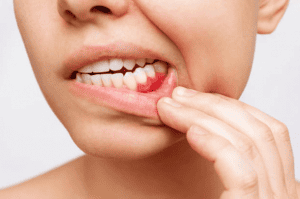Every health-conscious person is aware that brushing their teeth twice a day is non-negotiable in maintaining good oral hygiene. However, when it comes to flossing, opinions vary greatly. Ask anyone how often should one floss, and the answers will probably be as varied as the number of people you ask. Flossing, while essential, raises an important question -Can you floss too much?
The American Dental Association recommends flossing at least once a day to help remove plaque from the areas between your teeth where your toothbrush can’t reach. This is called interdental cleaning, and it’s crucial in preventing gum disease and tooth decay.
But with this recommendation, some might be compelled to think, if flossing once a day is good, doing it multiple times must be better, right? Surprisingly, the answer to that can be no.
Like any other good thing in life, too much flossing can do more harm than good.
The Potential Harms of Over-Flossing
Over-flossing can lead to a variety of tooth and gum issues. Firstly, it can cause your gums to become irritated and inflamed. The constant scraping can cause damage to your gum tissue leading to red, sore gums and even bleeding. The gums are delicate, and aggressive or too frequent flossing can lead to their recession.
Moreover, too much flossing can expose the root of your teeth, leading to increased sensitivity to hot and cold foods and drinks. While the enamel, the outer layer of our teeth, protects against sensitivity, the root of the tooth does not have this protective layer. Hence, when the gums recede due to over-flossing, sensitivity can creep up.
Finally, over-flossing can also mess with the natural balance of good bacteria in the mouth, essential for a healthy oral microbiome.
How to Determine if You’re Overusing Dental Floss?
There are a couple of signs you should look out for that show whether you’re overusing dental floss:
Bleeding Gums: Although it’s normal for gums to bleed a little if you have just started flossing, continuous bleeding is not normal. If your gums start to bleed every time you floss, this might be a sign of over-flossing.
Receding Gums: If your gums are receding, making your teeth appear longer, and you feel sensitivity to cold or hot food, it’s possible that you have been overusing floss. Excessive flossing can cause the gums to pull back, exposing the roots of the teeth.
Irritated Gums: If your gums are consistently red and swollen, this could also be a sign of over-usage. Healthy gums should look pink and firm, not red and swollen.
Tooth Sensitivity: If you’re experiencing pain or discomfort when eating hot, cold, acidic, or very sugary foods, this could be a sign that you’ve over-flossed and exposed parts of your teeth that are typically covered by gums.
Remember, proper flossing technique also plays a vital role. Be sure to be gentle while flossing, and avoid snapping the floss between the teeth, which can cause trauma to the gums.
If you notice any of these signs, it’s a good idea to speak to a dentist. They can provide more personalized advice based on your oral health and can guide you on how to floss correctly.
How can I avoid over-flossing?
Avoiding over-flossing largely comes down to understanding the correct technique, and maintaining a healthy and consistent oral hygiene routine. Here are some tips on how to avoid over-flossing:
Floss Once a Day: The American Dental Association (ADA) recommends flossing once a day. This frequency is enough to keep your teeth clean and plaque at bay.
Use Proper Technique: Be gentle and don’t force the floss between your teeth. Move the floss smoothly between the teeth and along the gum line to help avoid damaging the gum tissue.
Correct Length of Floss: Use around 18 inches of floss for every flossing session. This allows you to use a fresh part of the floss as you move from one tooth to another.
Don’t neglect good Brushing Habits: Flossing should be part of a good oral hygiene routine which also includes brushing your teeth twice a day with fluoride toothpaste. This will help keep your teeth and gums healthy.
Regular Dental Check-ups: Regular check-ups with your dentist can ensure that you’re using proper technique and can help detect any potential over-flossing issues early.
Remember, flossing is not about removing food from between your teeth but about removing dental plaque, a coating of bacteria that forms around teeth every day. When done correctly and at the right frequency, flossing is a crucial tool in maintaining good dental health.
What are the consequences of over-flossing?
Over-flossing, or flossing too vigorously, can have a number of negative impacts on your oral health:
Gum Damage: If you’re flossing too much, you could potentially injure your gums, causing them to become swollen, red, and bleed easily.
Receding Gums: Over-flossing can result in the gums pulling away from the teeth, leading to recessed gums. This can expose the roots of your teeth, leading them to become more sensitive to temperature and prone to decay.
Teeth Sensitivity: When gum recession occurs due to over-flossing, it can lead to tooth sensitivity. Exposed roots are sensitive to hot, cold, sweet, sour, and acidic food and drinks, which can cause discomfort and pain.
Damage to Dental Work: Over-flossing can also potentially damage bridges, crowns, or fillings, leading to costly dental repair work.
While flossing is an indispensable part of oral hygiene, it is essential to do it properly. If you’re uncertain about whether you’re flossing too much or using improper technique, it’s best to consult with a dental professional. They can guide you on the proper way to floss for your specific oral health situation.
The Right Way of Flossing
While we’ve established that it’s possible to floss too much, this should not deter you from the practice altogether. Instead, focus on flossing correctly and sufficiently.
When flossing, make sure you’re gentle. Use about 18 inches of floss, and slide it up and down along each tooth, following the curve of the tooth as you get close to the gum line. Unroll a fresh section of floss for each tooth, and don’t forget to floss the back sides of your rear teeth.
Conclusion
While regularly flossing is an essential part of maintaining dental health, doing it too often can lead to problems. Remember, it’s not about the frequency, but the technique and thoroughness.
So, can you floss too much? The answer is yes, you can. As with all good hygiene habits, moderation and proper technique are key. After all, the goal is not only to have a radiant smile but a healthy mouth too!
Take care of your oral health because a smile is the most beautiful thing you can wear!


